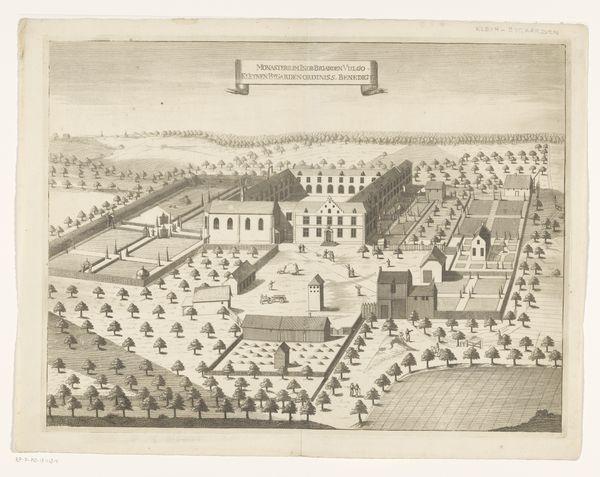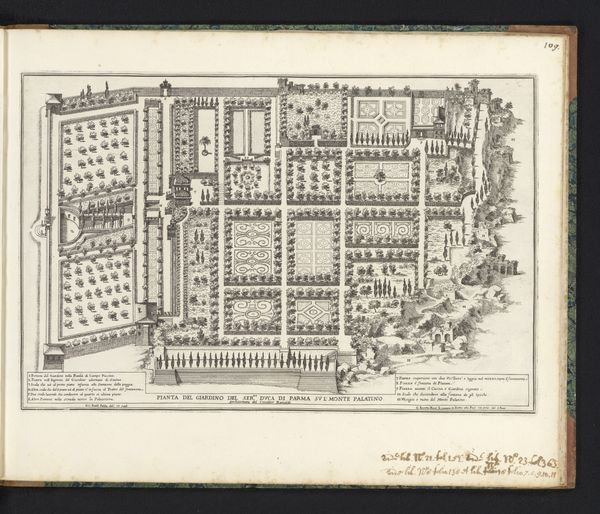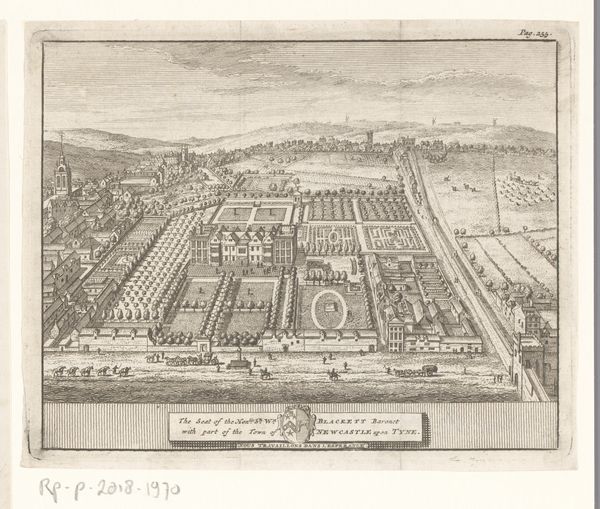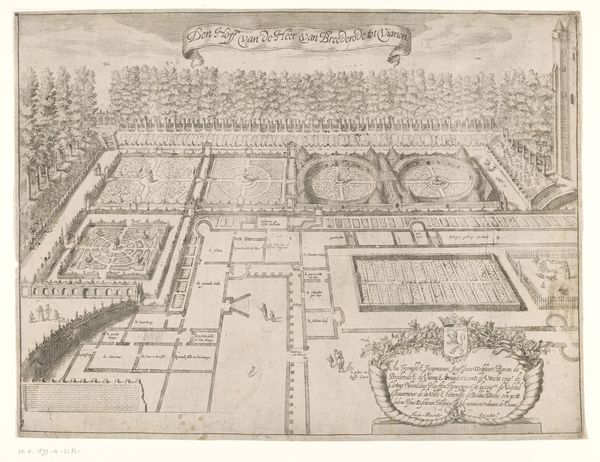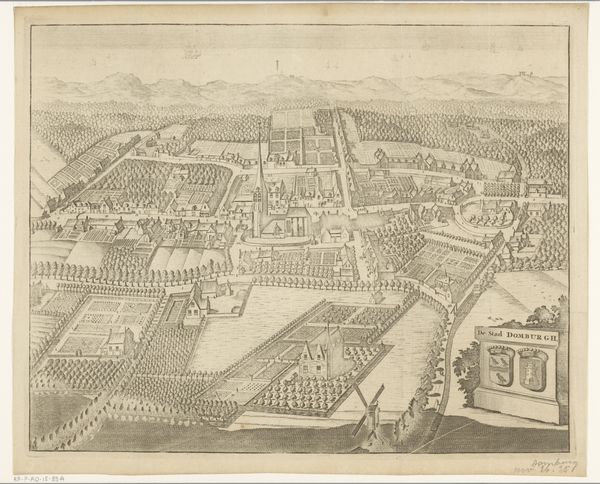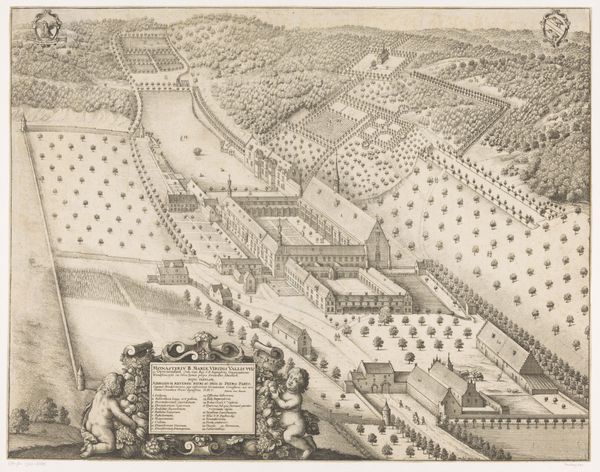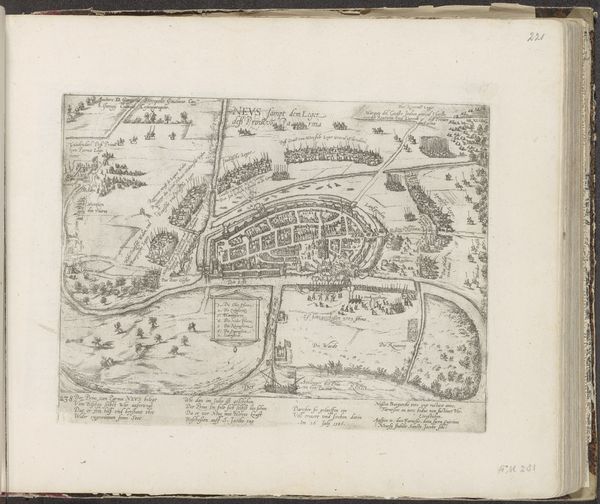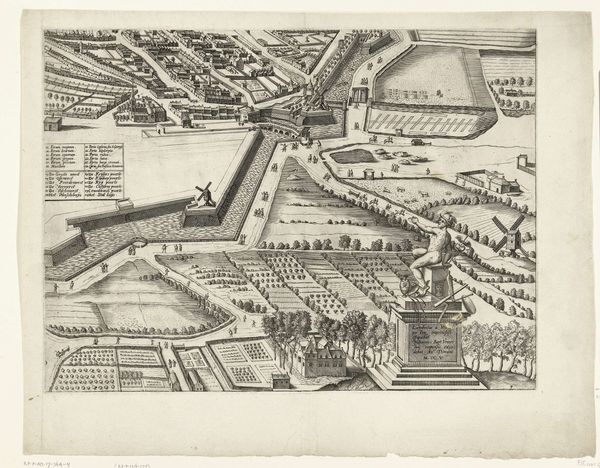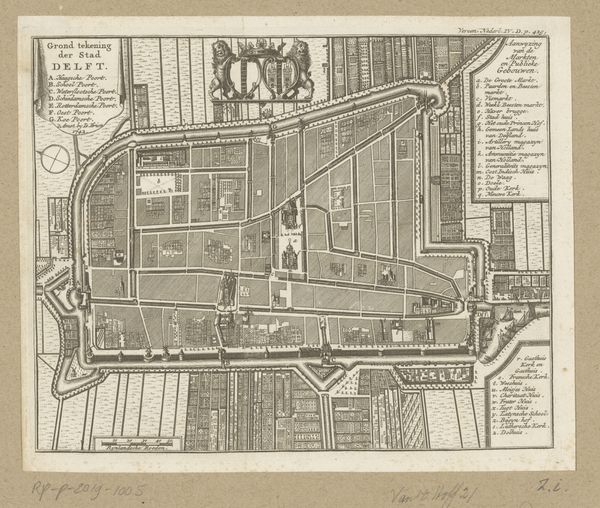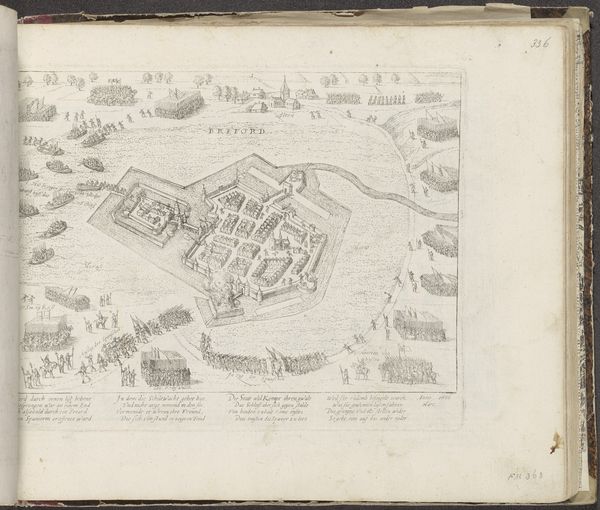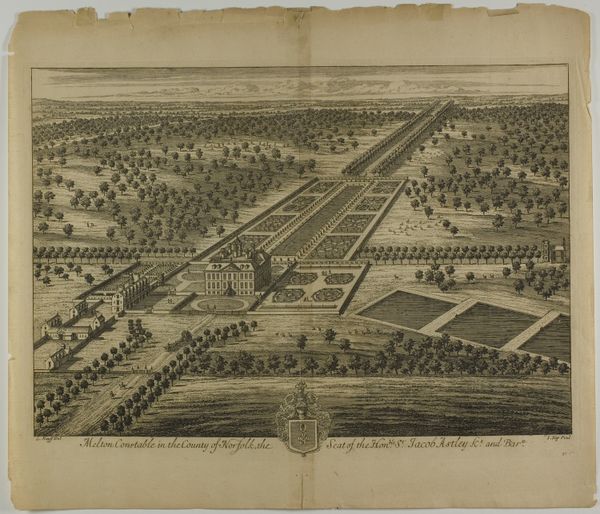
Plattegrond van de tuin bij de Villa Doria Pamphilj te Rome before 1683
0:00
0:00
giovannibattistafalda
Rijksmuseum
drawing, ink, engraving
#
drawing
#
baroque
#
mechanical pen drawing
#
landscape
#
ink
#
cityscape
#
engraving
Dimensions: height 317 mm, width 433 mm
Copyright: Rijks Museum: Open Domain
Giovanni Battista Falda made this print of the ground plan of the garden at Villa Doria Pamphilj in Rome sometime in the late 17th century. The print gives us an insight into the spatial and social order of the Roman elite during the Baroque period. The meticulously planned garden is a testament to the family's wealth and power. Note the visual codes of the rigid geometry of the planting, the fountains, and the hidden garden structures. These would have been understood as a kind of theater for social display, with the garden serving as a backdrop for elaborate entertainments and political machinations. The Villa was designed by Alessandro Algardi and Giovanni Francesco Grimaldi. The Villa Doria Pamphilj itself was a site of cultural production, hosting artists, writers, and musicians, solidifying the family's status as patrons of the arts. By studying estate plans, visitor books, and other historical documents, we can uncover the complex interplay of art, power, and social life in seventeenth-century Rome. Ultimately, this print serves as a reminder that art is always embedded in a specific social and institutional context, shaping its creation and reception.
Comments
No comments
Be the first to comment and join the conversation on the ultimate creative platform.

